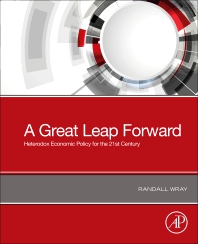
Publications
Explaining Long-Term Exchange Rate Behavior in the United States and Japan
Conventional exchange rate models are based on the fundamental hypothesis that, in the long run, real exchange rates will move in such a way as to make countries equally competitive. Thus they assume that, in the long run, trade between countries will be roughly balanced. The difficulty in assessing expectations about the consequences of trade arrangements (such as NAFTA or the EEC) is that these models perform quite poorly at an empirical level, making them an unreliable guide to economic policy. To have a sound foundation for economic policy requires operating from a theoretically grounded explanation of exchange rates that works well across a spectrum of developed and developing countries. This paper applies the theoretical and empirical foundation developed in Shaikh (1980, 1991, 1995), and previously applied to Spain, Mexico, and Greece (Roman 1997; Ruiz-Napoles 1996; Antonopoulos 1997), to the explanation of the exchange rates of the United States and Japan. Such a framework implies that it is a country's competitive position, as measured by the real unit costs of its tradables, that determines its real exchange rate. This determination of real exchange rates through real unit costs provides a possible explanation for why trade imbalances remain persistent and a policy rule-of-thumb for sustainable exchange rates. The aim is to show that a theoretically grounded, empirically robust, explanation of real exchange rate movements can be constructed that also can be of practical use to researchers and policymakers.

